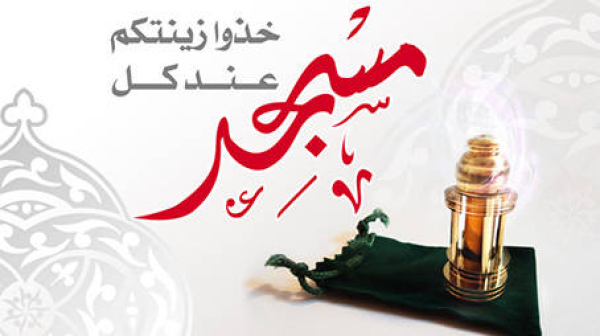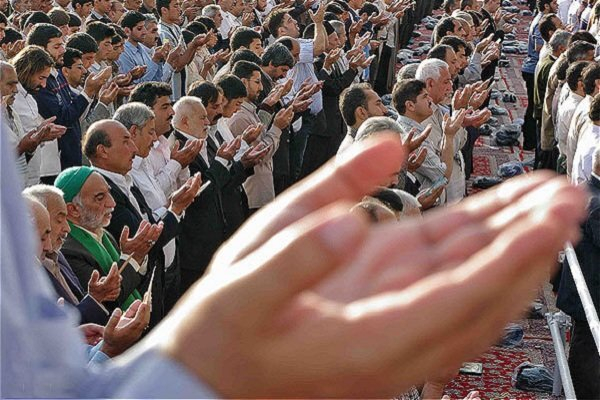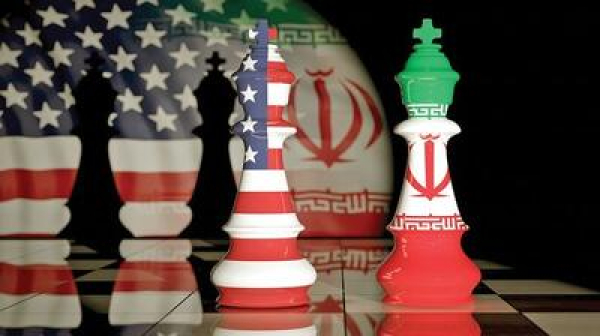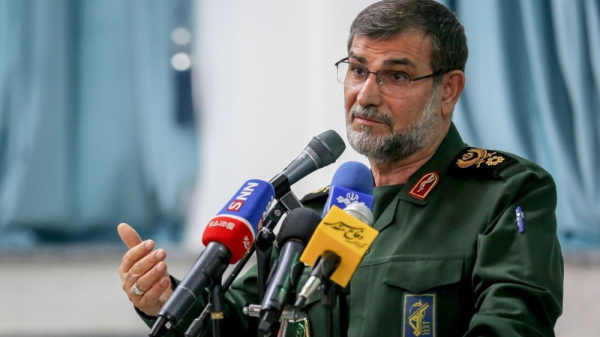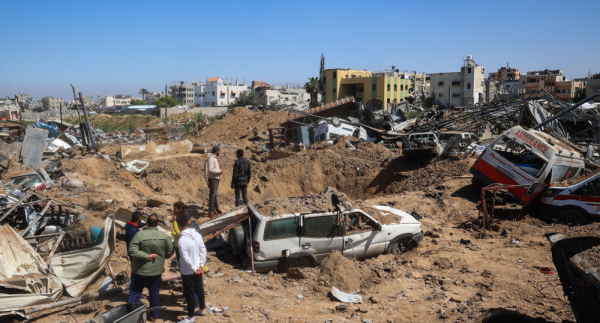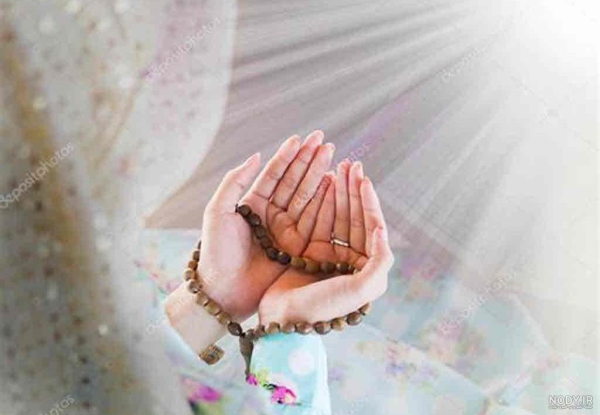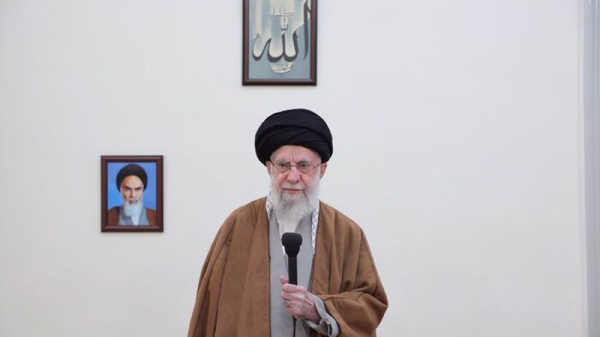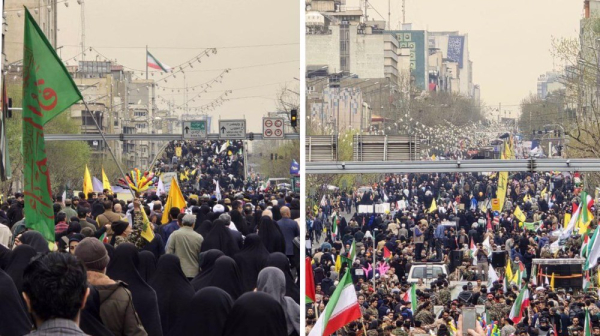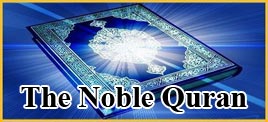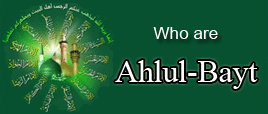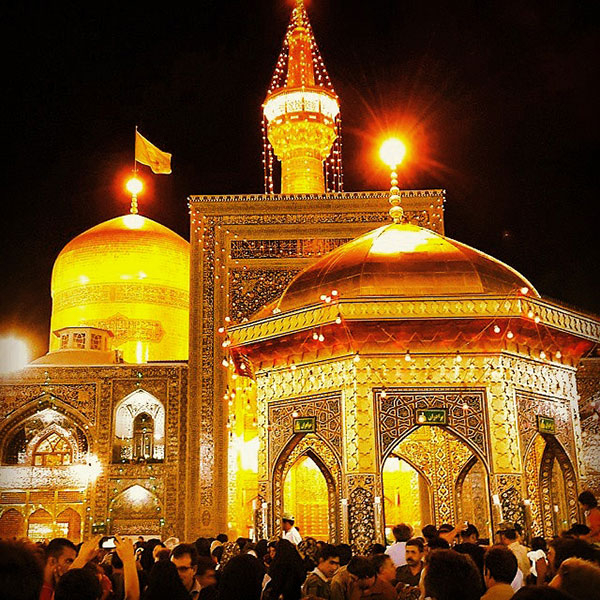zarezadeh
When is the time to set aside Zakat al-Fitr and pay it?
Answer:
After the month of Shawwal is confirmed, one can set it aside.
And if one prays Eid al-Fitr,
As an obligatory precaution, one should pay it or set it aside before the prayer.
And if one does not pray Eid al-Fitr, one has until noon on the day of Eid al-Fitr.
Quality of attendance at mosques
يَا بَنِي آدَمَ خُذُوا زِينَتَكُمْ عِنْدَ كُلِّ مَسْجِدٍ وَكُلُوا وَاشْرَبُوا وَلَا تُسْرِفُوا ۚ إِنَّهُ لَا يُحِبُّ الْمُسْرِفِينَ(اعراف:۳۱)
O Children of Adam! Put on your adornment on every occasion of prayer, and eat and drink, but do not waste; indeed, He does not like the wasteful.
Going to the mosque with adornment is a sign of respect for God's servants, for worshipping God, and also serves to attract and encourage others to act. In narrations, the example of adornment includes being a just Imam, being well-groomed, wearing perfume and beautiful clothes during prayer, raising one's hands during bowing and prostration, and participating in Eid and Friday prayers.
Eid al-Fitr Prayer
It is recommended to perform the Eid prayer and it consists of two rak'ahs. In the first rak'ah, Surah "Hamd" and Surah "A'la" (or any other Surah that you prefer) are recited, and then five takbirs are said, and after each takbir, Qunut is performed and the following supplication is recited:
اللَّهُمَّ أَنْتَ أَهْلُ أَهْلَ الْکِبْرِیاءِ وَالْعَظَمَةِ وَأَهْلَ الْجُودِ وَالْجَبَرُوتِ وَأَهْلَ الْعَفْوِ وَالرَّحْمَةِ وَأَهْلَ التَّقْوَی وَ الْمَغْفِرَةِ أَسْأَلُکَ بِحَقِّ هَذَا الْیوْمِ الَّذِی جَعَلْتَهُ لِلْمُسْلِمِینَ عِیدا وَلِمُحَمَّدٍ صَلَّی اللَّهِ عَلَیهِ وَآلِهِ ذُخْرا وَشَرَفا وَمَزِیدا أَنْ تُصَلِّی عَلَی مُحَمَّدٍ وَآلِ مُحَمَّدٍ وَأَنْ تُدْخِلَنِی فِی کُلِّ خَیرٍ أَدْخَلْتَ فِیهِ مُحَمَّدا وَآلَ مُحَمَّدٍ وَأَنْ تُخْرِجَنِی مِنْ کُلِّ سُوءٍ أَخْرَجْتَ مِنْهُ مُحَمَّدا وَآلَ مُحَمَّدٍ صَلَوَاتُکَ عَلَیهِ وَعَلَیهِمْ أَجْمَعِینَ اللَّهُمَّ إِنِّی أَسْأَلُکَ خَیرَ مَا سَأَلَکَ مِنْهُ عِبَادُکَ الصَّالِحُونَ وَأَعُوذُ بِکَ فِیهِ مِمَّا اسْتَعَاذَ مِنْهُ عِبَادُکَ
الصَّالِحُونَ
Then he should say the sixth takbir and go to ruku'. After ruku' and sajdah, he should stand up and start reciting the second rak'ah. In the second rak'ah, after Surah "Hamd", Surah "Shams" or another surah should be recited. Then he should say four takbirs and after each takbir he should recite the same qunut. Then he should say the fifth takbir and go to ruku' and sajdah and complete the prayer.
After the prayer, he should say the Tasbihat of Hazrat Zahra (s.a.) and then recite the supplications that have been narrated, one of which is the forty-sixth supplication of "Sahifa al-Sajjadiyyah". It is recommended that the Eid prayer be under the sky and after the prayer, he should pray for the other believers to have their deeds accepted.
Eid Al Fitr 2025
Eid al-Fitr (Arabic: عيد الفطر, romanized: ʿĪd al-Fiṭr, lit. 'Festival of Breaking the Fast') is the first of the two main festivals in Islam, the other being Eid al-Adha. It falls on the first day of Shawwal, the tenth month of the Islamic calendar. Eid al-Fitr is celebrated by Muslims worldwide because it marks the end of the month-long dawn-to-dusk fasting (sawm) of Ramadan. The holiday is known under various other names in different languages and countries around the world.
The Gulf country announced the official date after religious committees conducted a moon sighting on Saturday.
According to moon sighting results, the committee sighted the crescent for the month of Shawaal, the tenth month in the Islamic calendar.
Many other countries confirmed Sunday as Eid Al Fitr. But some countries such as Iran announced Monday as Eid Al Fitr.
The State of the Iran-US Conflict
Author: Mohammad Mahmoudi Kia, a member of the faculty of the Imam Khomeini and Islamic Revolution Research Institute
Iranian Diplomacy: Donald Trump, in his last appearance in the White House, is making great efforts to take great steps for the nationalist ideal, flavored with his exceptionalist American dream – Make America Great Again – in the time ahead. Therefore, he has opened many cases in the international arena, some of which have not even lasted more than a few days, just like what he said about Gaza and its purchase, or his other statements in this regard that indicate his mental confusion. However, it seems that Trump is seeking to present a proactive image of Republican America in relation to acute international issues without wanting to directly spend American resources on subsiding or containing these crises. On the other hand, the continuation of the current crises in Eastern Europe, as well as the complex and escalating crisis after October 7, is a major obstacle to the goals he declared in the slogan of the recent US presidential election campaigns, because the aforementioned regions are traditionally the place where US policies are spent, and the American order will not be able to survive in this geography without US presence, support, and intervention.
This is while America's main rival, China, sees these regions as the largest market for its products and bears no responsibility for the current crises there. Trump, who defines himself as the opposite of the cosmopolitan and globalist policies of the Democrats, has included the belief at the center of his policies and decisions that, while he should not be indifferent to the crises in the aforementioned regions, he should not spend US resources on crisis management and its uncertain outcome.
However, it seems that the crisis in the Middle East has created a different situation, in such a way that it seems that the plurality and multiplicity of actors involved in the current crisis, and in particular the state of American interests in this region, have changed Trump's view of the model for resolving the crisis.
In fact, although the Republican ruling party experiences and displays a kind of unity of opinion regarding the Ukrainian crisis, regarding the current crisis in the Middle East, a kind of dispersion of opinions can be distinguished into three main spectrums: warmongers such as Marco Rubio, Secretary of State and Mike Waltz, US National Security Advisor; isolationists such as James David Vance, Vice President; and interactionists such as Elon Musk. The fourth aspect of this circle of communication within the American elite is related to the influence and influence of Netanyahu, the criminal and evil Prime Minister of the Zionist regime, who has shown that he has a significant capacity to bring the United States government along - regardless of the political faction that dominates the White House - which could tip the balance in favor of the warmongers' position.
The policy of the Zionist army returning to the war campaign with Hamas and proposing new scenarios for the military occupation of Gaza and the complete destruction of Hamas on the one hand, and also proposing a new security equation in Lebanon called the Metulla-Beirut threat balance instead of the previous Tel Aviv-Beirut threat model, shows Netanyahu's determination to resolve Israel's long-standing challenge with the resistance, which of course cannot have been implemented outside of an agreement with Donald Trump. These same points and signs could indicate the escalation of the crisis in the Middle East.
The extensive and devastating military action of the United States and Britain against Yemeni Houthi positions and the unprecedented military presence in the Middle East and its neighboring regions, such as the Garcia base in the Indian Ocean, indicate the possibility of escalating the conflict beyond Yemen. In recent weeks and days, the United States has significantly increased its military presence in the Persian Gulf and Indian Ocean, deploying B-2 stealth bombers, cargo planes, and aerial refueling tankers alongside key assets such as the aircraft carriers USS Carl Vinson and USS Harry S. Truman. These actions indicate an increase in US preparedness, which is far from being expected to be such a large mobilization of resources and military presence solely to quell the Yemeni crisis. Therefore, all possible scenarios must be considered. Although the United States has adopted a policy of war against Ansar Allah in Yemen, it has a more cautious attitude towards Iran, which is partly due to the same division of opinion within its ruling body.
Donald Trump clearly does not want to enter into a direct military conflict with Iran because he has serious concerns about the unknown consequences of this policy, although recent developments in Syria, Lebanon, and Iraq have somewhat reduced the volume of Trump’s security concerns. However, Trump has pursued a two-pronged policy towards Iran that is accompanied by a certain ambiguity. On one side of this policy is a carrot-and-stick policy that invites Iran to join the international community, and on the other side, threatens it with the most severe sanctions and even war and military confrontation. The two-month deadline for Iran could also be partly associated with the scenario that during this period, Iran and consequently the other remaining parties in the resistance axis will be kept away from any effective action regarding the Yemen crisis and, by resolving the Yemen crisis, they will turn their full power against Iran; which, considering what was mentioned in the previous lines describing the current situation of the crisis, will not be so unlikely.
But on the other side of the field, what measures should Iran have? What possibilities are available for Iran to safely remove this potential threat from its front?
In the first step, Iran has strengthened its missile capabilities and deployed advanced air defense systems around the Strait of Hormuz, while increasing its military activities in the region without showing any clear signs of this presence. The unveiling of cities filled with missiles or other naval combat capabilities, such as the recent display of an astonishing missile city containing long-range ballistic missiles of the Islamic Revolutionary Guard Corps such as the Khyber-Shakan, Qadr-H, Emad, Hajj Qassem, Sejjil and Paveh cruise missiles, as well as thousands of high-explosive warheads buried deep in the ground, all indicate Iran’s readiness for a possible military confrontation with the United States and the occupying regime in Jerusalem.
A little further away from the geography of tension, the components of Iran’s power are becoming apparent. The recent victory of the army in Sudan and the recapture of the capital and Khartoum airport from the Rapid Support Forces rebels is noteworthy, while a little earlier Iran hosted high-ranking political and military officials from that country, which could mean the possible opening of another area of influence for Iran on the western shore of the Red Sea and further complicating the security dilemma of the Zionist regime.
This is while the Yemeni front has not stopped yet for various reasons that will be explained at another time, and there is a possibility of new surprises from the Yemeni army and armed forces, which would mean the possibility of increasing Iranian pressure on both sides of the Red Sea.
A little further away from the geography of tension, the possible invitation of Rafael Grossi to travel to Tehran also indicates Tehran's view of reducing the volume of European doubts. This could prevent the acceleration of the process of activating the trigger mechanism and, in a way, buy time for Iran.
The other side, in the vicinity of the geography of tension, refers to the Caucasus region. The recent regional diplomacy of the Foreign Minister, and in particular the recent trip to Armenia, supports Iran's serious activism in the South Caucasus region, which in itself requires a detailed analysis of the various aspects and dimensions of this regionalist policy, precisely at a time when there is the greatest possibility of war against Iran.
On the domestic side of the geography of tension, the lack of urgency in providing a response to Trump's letter and the visits of Iranian officials to countries in the region are somehow consistent with other aspects of Iran's declarative and declarative policy.
Conducting naval military exercises with Russia and China is another aspect of the Islamic Republic’s policy towards recent developments, which is expected to accelerate the implementation of Iran’s strategic cooperation documents with the two countries, which will lead to Tehran drawing closer to Moscow and Beijing.
Overall, it seems that Iran has kept the window of diplomacy with the United States open, but is in no hurry to enter into negotiations without achieving effective bargaining tools.
On the other hand, it has also considered the option of war a possibility and is considering possible scenarios for entering into a full-scale war. In these circumstances, the most important issue and factor in the crisis process is the management of inputs to the tension environment. If the inputs that create chaos on both sides of the conflict are not controlled, entering a military tension is inevitable.
In the author’s opinion, it is natural that Iranian agents are solely responsible for their own playing field and must protect it from any inputs that create chaos; These include: not deviating from the principled policy of a peaceful nuclear program without nuclear weapons; dispelling ambiguity about the nuclear program and providing a convincing response to the Agency's questions; preventing any internal tension or widespread chaos; maintaining Hezbollah's policy of adherence to the ceasefire; controlling the scope of tension on the Yemeni front; controlling the policy of inaction of the Islamic resistance in Iraq; refusing to take any action related to Iran's security policy, etc. Controlling these and other similar matters in the current situation, in addition to demonstrating Iran's power of activism in the region, are effective factors in managing the current crisis and can be considered as cards in Iran's possession at the table of possible upcoming negotiations.
In a normal situation, the upcoming 5-month period should be controlled with the greatest sensitivity and care, because outside this period, some of the current urgent threats, such as snapback, will not be able to materialize.
IRGC Navy cmdr.: Any attack on Iran’s interests will be met with firm response
The commander of the Islamic Revolution Guards Corps (IRGC) Navy has warned that any threats of military aggression against the Islamic Republic will be met with a resolute response.
Rear Admiral Alireza Tangsiri made the remarks during an interview with Lebanon’s Arabic-language al-Mayadeen television news channel on Friday evening, as President Donald Trump threatened Iran with “very bad” repercussions if it does not reach a deal with the US on its nuclear program.
“We do not seek war and do not wish for it. However, if the enemy tries to harm our interests or attack our people, they must know we will respond,” Tangsiri stressed.
He added that Iran possesses the military capability to strike enemy bases anywhere, noting that any geographical location from which an attack is launched on the country will be targeted in return.
“If our vessels are attacked, we will undoubtedly respond in kind. If they confiscate our ships, we will seize theirs. No one can hit us and run away. Even if we have to chase them to the Gulf of Mexico, we will do so,” the IRGC Navy commander said.
Tangsiri highlighted that Iran will not bow to pressure or threats and will not allow Trump or anyone else to impose their will on the Islamic Republic.
On the possibility of blocking the strategic Strait of Hormuz, he stated that the decision on the matter rests with high-ranking officials, and that his forces would be responsible for carrying out such an order if given.
The senior Iranian military commander also dismissed the significance of Trump’s message and threats, saying, “I have no knowledge of Trump’s message, nor do I care to analyze it. I hear his threats, I observe his actions, and I prepare myself to counter them.”
Tangsiri categorically rejected any possibility of Iran engaging in negotiations over its missile program and support for resistance groups across the region.
He added that Iran supports resistance movements because it defends the oppressed; however, it does not impose its will on the groups.
The IRGC Navy commander emphasized that Yemen is not under Iran’s tutelage, as it has its own independent army and leader.
Elsewhere in his remarks, Tangsiri underlined that Iran seeks peaceful relations with its neighbors, assuring that Tehran does not pose a threat to other regional nations.
“We always extend a hand of friendship to the countries in the region. As Muslims, we do not pose any threat to our neighboring countries,” he said.
Tangsiri noted that Iran invited Arab countries to participate in military exercises, pointing to the presence of representatives from the United Arab Emirates, Qatar, Iraq, and Kuwait in the drills.
The IRGC Navy chief also expressed Tehran’s readiness to stage joint exercises with Iraq, Kuwait, and Bahrain.
He pointed out that the Sultanate of Oman is a brotherly and friendly state, and Iran holds military exercises with it regularly.
Press TV’s website
Missing Gaza rescue team ‘executed’ by Israeli forces, officials say
A week after a group of aid workers disappeared in Gaza’s southern town of Rafah, the Palestinian Red Crescent Society (PRCS) says they are believed to have been “executed” by Israeli forces.
A group of 15 paramedics and rescue workers from PRCS and Gaza’s Civil Defense “vanished" on March 22 in the Tal Sultan neighborhood in Rafah following an incident in which Israeli forces fired on ambulances and fire trucks.
They had arrived in response to an Israeli bombing in Rafah.
In a Saturday statement, PRCS said, "So far, no trace of our team members has been found.”
“Yesterday (March 28), we discovered the four ambulance vehicles completely destroyed and buried in the sand,” PRCS said, adding that they are believed to have been executed.
Civil Defense spokesperson Mahmoud Basal said that the body of one emergency worker had been found.
Basal said that when Civil Defense and Red Crescent teams were finally granted access to the area, they found “massive destruction” and widespread bulldozing.
“We found our vehicles and the Red Crescent vehicles destroyed,” and subsequently, the body of one worker that had been buried by bulldozers was retrieved, he added.
In a report on Saturday, al-Jazeera also cited witnesses as saying that Israeli forces had killed and buried the team of paramedics and rescue workers who went to Rafah last week.
Israel’s military said in a statement that on that day, its forces had opened fire at “suspicious vehicles” advancing toward troops without prior coordination.
Basem Naim, a member of Hamas’s political bureau, said it was “a deliberate and brutal massacre against civil defense and Palestinian Red Crescent teams in the city of Rafah.”
Since the start of Israel’s genocidal war on Gaza in October 2023, 19 PRCS members have been killed while on duty, according to the society.
“We cannot bear to add more names to this tragic list,” a spokesperson for the society said Thursday.
In a separate incident, Israeli forces killed one member of the World Central Kitchen (WCK) and injured six others “as meals were being distributed” in Gaza on Thursday.
Press TV’s website
Menopause criteria according to Islamic scholars
Imam Khomeini, Ayatollah Zanjani, Safi, Golpayegani, Sobhani, Fadel
?The age of menopause for women who are 60 years old, and for women who are not 50 lunar years old.
(Zanjani: If she is sure that she is 60 or has doubts about it, if the bleeding starts during the days of menstruation or one or two days before that, or if her blood has the characteristics of menstruation, it is considered menstruation.)
Khoei, Tabrizi, Wahid, Shahroudi
? After 60 lunar years, the blood that they see is istihaza. Between 50 and 60 years, if the blood had the characteristics of menstruation or was during the days of menstruation, she should combine the acts of menstruation and the acts of mustahaza, as a precaution.
Sistani
?Menopause occurs with respect to menstruation upon reaching the age of 60 in both Sayyidah and non-Sayyidah, and the recommended precaution for non-Sayyidah women between the ages of 50 and 60 is that if she has the characteristics of menstruation, she should combine the characteristics of menstruation with the acts of mustahazah. The ruling on menopause in the waiting period that causes the waiting period to end is, according to Azhar, limited to fifty years.
Bahjat
?A Sayyidah becomes menopausal upon reaching the age of 60, and a non-Sayyidah between the ages of 50 and 60, if she is sure that the blood she sees is menstruation, she should apply the rulings of menstruation.
Khamenei
?It is necessary to reflect and be cautious in determining the exact age limit for menopause. Women can refer to the Jame’e-e-Sharaiti Mujtahid, who has a specific fatwa on this issue.
Makaram
?The age of menopause is absolutely the completion of fifty lunar years unless the blood has the characteristics of menstruation and its conditions.
=================================
How to calculate the lunar year with the solar year?
50 lunar years = 48 years and 6 solar months
60 lunar years = 58 years and 77 days minus 12 hours.
Ayatollah Khamenei calls for ‘magnificent’ Quds Day rallies
Leader of the Islamic Revolution Ayatollah Seyyed Ali Khamenei says the international Quds Day march on Friday “will, God willing, be one of the best, most magnificent, and most honorable marches".
“Quds Day is always a sign of the unity and strength of the Iranian nation,” the Leader said in a televised message Thursday night.
“It is also a sign that the Iranian nation is steadfast and robust in its important, political, and fundamental goals, and will not abandon the slogan of supporting Palestine.”
Al-Quds Day, or simply Quds Day, is an annual, international day held every year on the last Friday of Ramadan to express support for Palestine and oppose the Israeli occupation of Palestinian territories.
Large rallies are held as Israel continues its attacks on Gaza and the occupied West Bank.
The late founder of the Islamic Republic, Imam Khomeini, established Quds Day in 1979 shortly after the Islamic Revolution in Iran to show solidarity with Palestinians. It has since become a symbol of resistance.
Ayatollah Khamenei described the Quds Day march one of the honors of the Iranian nation.
“For the past 46 years, the fasting Iranian nation has participated in the Quds Day marches in various weather conditions, with a turnout not only in large cities but also in small towns and villages,” the Leader said.
Ayatollah Khamenei stressed that the importance of the Quds Day march this year is more than in previous years.
“The nations of the world are on our side; those who know us are on the side of the Iranian nation, but some politicians and governments that are against us are spreading propaganda against the Iranian nation: they pretend there are differences and there is a weakness.
“Your march on Quds Day will refute all these tricks and false statements,” the Leader said in his address to the Iranian nation.
Press TV’s website
Millions march on Quds Day to support Palestinians amid Israeli genocide
Millions of people in Iran and across the world are taking to the streets to mark the International Quds Day, voicing their solidarity with Palestinians and decrying Israeli genocide in the besieged Gaza Strip.
Brigadier General Ramezan Sharif, the spokesman of Iran's Islamic Revolution Guards Corps (IRGC) and the director-general of Intifada committee in Tehran, said the rallies which started at 10:00 a.m. local time (0630 GMT) were being held in more than 900 cities across the country.
From different walks of life and various social strata, the demonstrators held the national flags of Iran and Palestine as well as banners that read, “Free Palestine,” and “Al-Quds must be liberated.”
Other flags belonging to regional resistance groups, including Iraq’s anti-terror Popular Mobilization Units, better known as Hashd al-Sha'abi, Lebanon’s Hezbollah resistance movement and Yemen’s Ansarullah were carried by demonstrators.
The mass rallies are held in many countries in the West Asian region, including Iraq, Yemen and Lebanon, as well as many others across the globe.
Senior Iranian officials are attending the rally in Tehran, with Parliament Speaker Mohammad Baqer Qalibaf about to address the event.
Al-Quds Day, or simply Quds Day, is an annual, international day held every year on the last Friday of Ramadan to express support for Palestine and oppose the Israeli occupation of Palestinian territories.
Large rallies are held as Israel continues its attacks on Gaza and the occupied West Bank.
The late founder of the Islamic Republic, Imam Khomeini, established Quds Day in 1979 shortly after the Islamic Revolution in Iran to show solidarity with Palestinians. It has since become a symbol of resistance.
Press TV’s website

